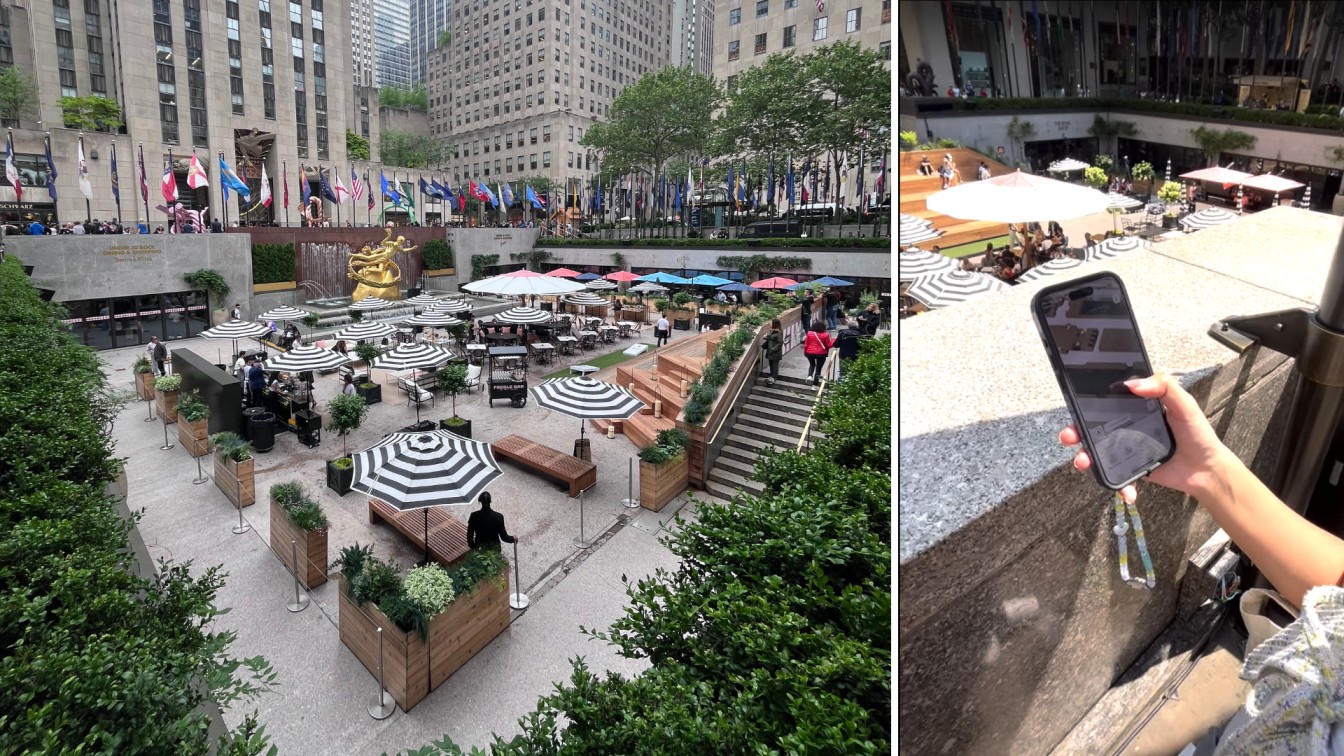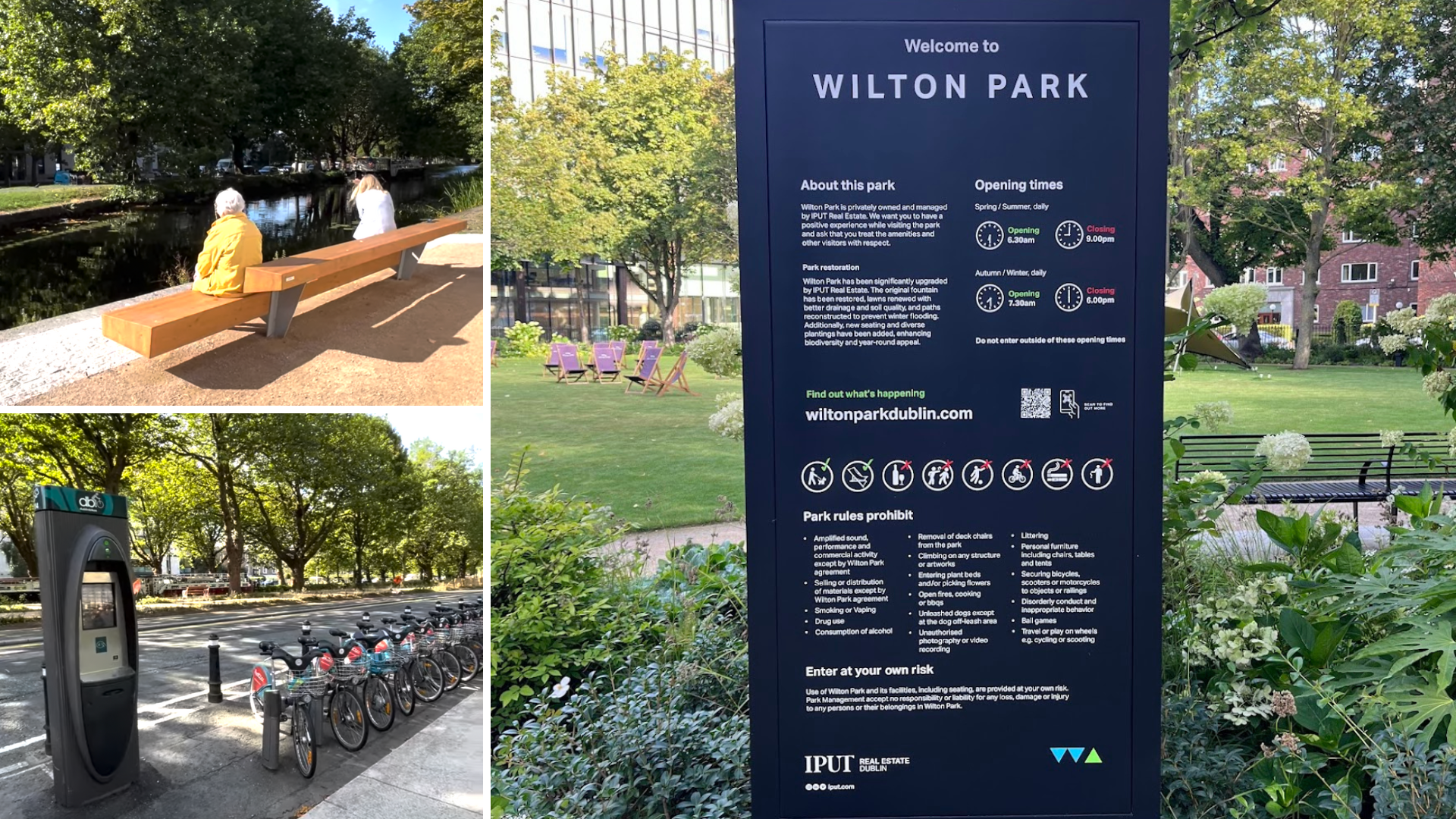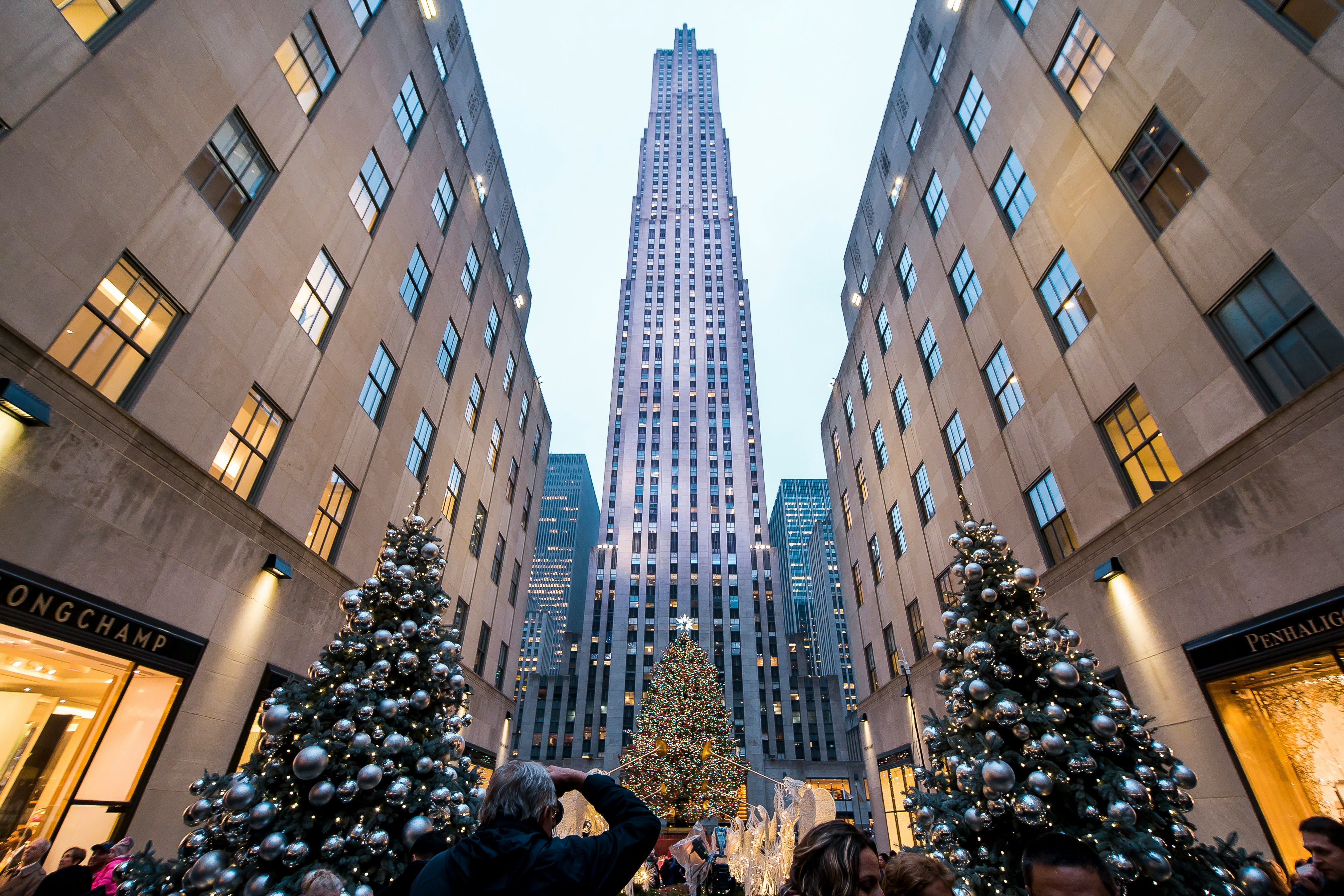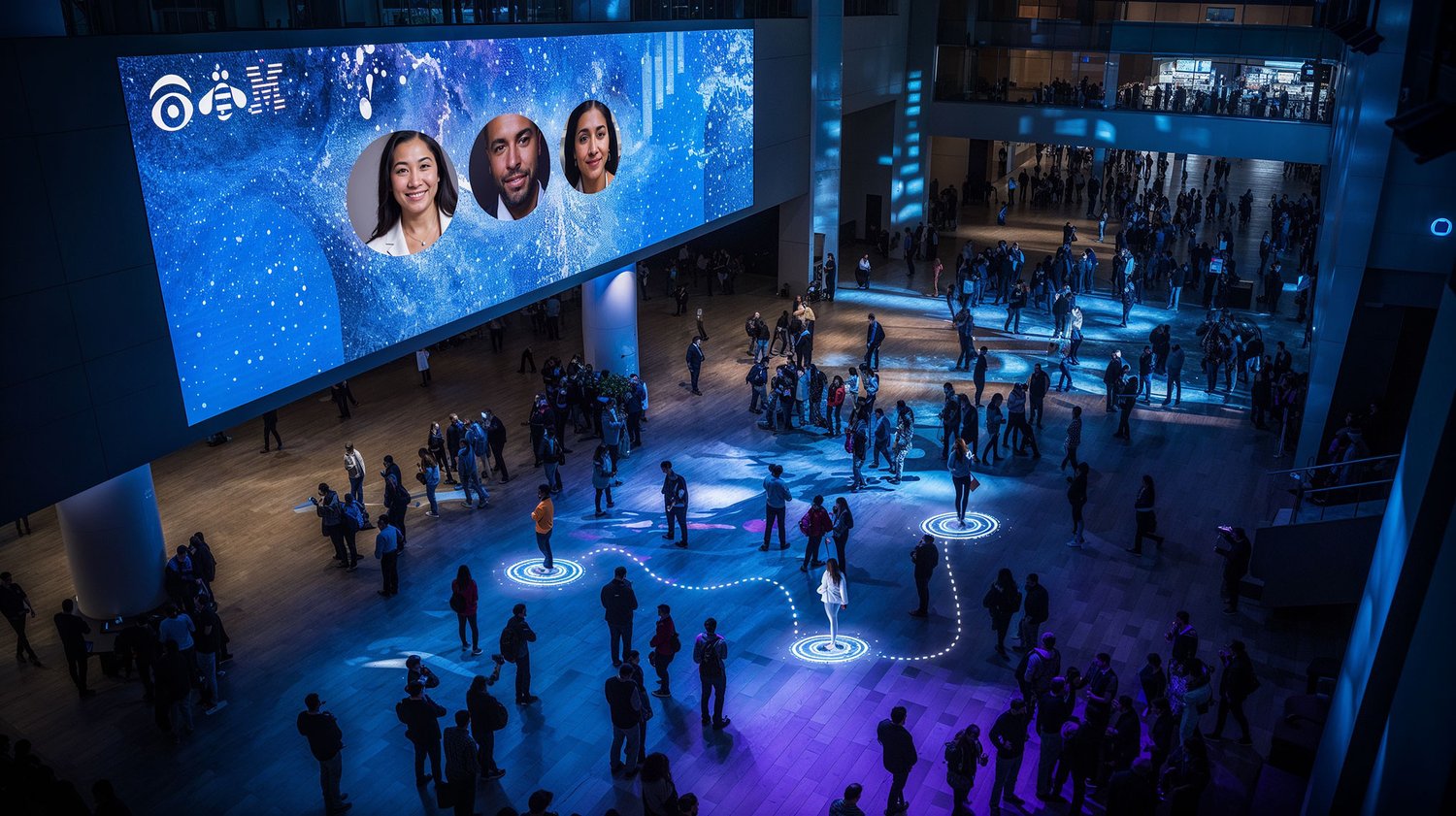The Lead: Why Campuses Matter (But Need an Upgrade)
September is here. Back to school, back to work, and back to the places where people still gather in person. Why? Because physical spaces still do something digital can’t. As Edward Glaeser reminds us, real progress happens in convergence points—dense, proximate environments where people collide, trade ideas, and build trust. Complex ideas need more than Wi-Fi; they need energy and serendipity that only in-person interaction delivers.
Campuses are supposed to be those convergence points. But the word “campus” is slippery. It covers a lot of ground: sprawling universities, hospitals, corporate HQs, innovation districts, even mixed-use real estate where you can sleep, eat, work, and maybe even do puppy yoga without leaving Wi-Fi range.
The problem? Too many campuses feel like they were designed by an accountant and a human resources department. Silicon Valley went from orange groves to parking lots and copy-paste glass buildings. Corporate towers in downtowns cling to leases, while half their staff work from home. What’s missing is the serendipity of a real downtown: chance encounters, street-level grit, ideas colliding over coffee instead of Zoom invites.
Once upon a time, you went to campus because that’s where the high end - servers, projectors and secure event spaces were. Today, many of those barely work—try getting a presentation on screen without sweating through your shirt. But the real opportunity is in treating the campus like an operating system: adaptive, responsive, and designed for humans, not IT manuals.
We’re moving from static operational plans to adaptive platforms. Think: less sheet music, more Spotify—constantly updating, remixing, and keeping people coming back. Or as NVIDIA’s Jensen Huang recently put it, the next wave is physical AI—intelligence embedded into the built world. The catch? Most campuses are still running a few decades behind. This isn’t about “digital buildings” as marketing decks promised. It’s about the operational UX of a place—the sensors, apps, analytics, and services that make a campus feel alive. The campus that can learn and adapt is the one that wins.
Field Intel: What’s Driving the Digital Campus Wave
The bigger picture: campuses are no longer just physical places; they’re adapting to the growing landscape of spatial tech. What does that mean? It means the campus itself is starting to act like a platform—blending physical infrastructure with digital experiences in ways that shape how people study, work, and move. Lately, we’ve been tracking stories that show how this wave is unfolding.
The Campus as One Smooth App
It starts on the front end: in today’s hybrid world, students expect campus life to feel as seamless as their favorite apps. No one wants to juggle six portals just to check class schedules or order food. This vision isn’t hype, it’s already underway.
→ Read: Thriving in Higher Ed’s Hybrid Future
UX Is a Financial Strategy
Real estate faces an $800 billion value gap, and digital experience is becoming a make-or-break factor. While that sounds like a win for digital innovation, it raises a bigger question: are we designing experiences to genuinely serve users, or just to protect the bottom line? Either way, it opens the door for campuses to prove that good UX is both financially smart and human-centered.
→ Read: Why Tenant Experience Is Now Crucial
Facilities That Anticipate, Not Wait
Facility management is getting a smart upgrade. Think AI systems that flag a broken AC before you even feel the chill, optimize energy use in real time, and generally behave more like thoughtful hosts than reactive maintenance crews. It’s the future of “campus care.”
→ Read: How AI Is Reshaping Facilities Management
Digital Doubles for Real Decisions
The most repeated drinking game term is “digital twin.” It sounds like sci-fi, but it’s the jargon used to describe virtual replicas of physical spaces. They’re giving facility teams a safer, smarter way to plan layouts, test energy strategies, and forecast occupancy. It’s a powerful tool, but the question is whether campuses can put it to work at scale, or if it will remain mostly pilot projects for now.
→ Read: The Power of Digital Twins in Campus Management
Why We Think This Matters
The stories above paint a picture of campuses on the cutting edge: digital twins, AI-driven facilities, hybrid platforms that feel like apps. In practice, many are still behind, stuck with clunky systems and uneven adoption. The challenge isn’t whether the tech exists; it’s how to bridge the gap between the marketing decks and the lived experience of students, tenants, and staff.
That’s the real frontier: not chasing the next shiny solution, but closing the distance between possibility and practice. Because until campuses can make the basics seamless, the promise of adaptive, human-centered platforms will stay just out of reach.
Deep Dive: Designing the Digital Campus with Noble

Rockefeller Center – Digital Wayfinding
This summer, Noble partnered with Tishman Speyer to roll out a digital wayfinding pilot at Rockefeller Center. The initiative focuses on testing new forms of navigation and discovery, helping visitors make the most of their time on campus while also creating value for tenants and retail partners. Our team played a key role in integrating maps, data, and service design into one seamless platform. With promising results from the pilot, we’re now exploring expanded tenant integrations, signage programs, and data platforms to evolve Rock Center’s digital layer even further.
.png)
Google – Digital Building Strategy
At Google’s new Austin offices, we were able to apply the methods from our Alphabet Buildings work and tailor them to very specific user and building requirements. This builds on our collaboration with Google to create and deploy the Digital Building Strategy & Guide, a groundbreaking framework that has since been adopted across Google’s global real estate portfolio. By aligning technology, user experience, and sustainability goals, the guide now serves as the foundation for the design, construction, and operation of “Smart Ready” buildings worldwide.

IPUT Dublin – Workplace Placemaking
On a recent trip back to Dublin, we revisited our earlier placemaking report developed with Arup for IPUT’s campus at Ballsbridge, now home to LinkedIn. While still emerging, the project shows how thoughtful design can activate both the workplace and its surrounding neighborhood. The area already benefits from a vibrant canal-side setting, bike share, and public art, while new open lawns and seating are creating spaces for gathering and events. It’s rewarding to see many of the placemaking best practices we highlighted beginning to take shape in what has become one of Dublin’s most active districts.
Bottom Line
From Austin to Dublin to Midtown Manhattan, we’re seeing how digital strategy, placemaking, and service design can work together to transform campuses into adaptive platforms. The lesson across these projects: technology matters, but it’s only powerful when grounded in human experience and place. That’s the role we aim to play—helping bridge the vision of “smart” campuses with the lived reality of the people who use them every day.
Events to Watch
- NVIDIA – Physical AI for VCs
📍 Virtual Webinar | 🗓 September 16, 2025
NVIDIA frames the next wave as “physical AI”—intelligence embedded into real environments. This event unpacks what that means for venture capital, but also offers signals for anyone shaping how AI integrates into campuses, workplaces, and cities.
Event details / register
- AIANY @ CannonDesign — “Live.Work.Play: Infusing Joy, Wonder and Awe into Designed Spaces”
📍CannonDesign, 300 E 42nd St, New York, NY | 🗓 September 16, 2025
Programming from the American Institute of Architects New York continues to explore the intersection of architecture, public space, and digital design. Worth watching for how traditional institutions are adapting to new technologies in the built environment.
🔗 AIANY Calendar
- DSF NYC Signage Social
📍 Assorted | 🗓 October 13, 2025
Join the industry for an event all week, bringing together leaders and innovators from the digital signage industry. Noble will also be joining the panel on Oct 15th at TAD.
🔗 Event details
.png)
- Urban Tech Summit
📍 Verizon Executive Education Center | 🗓 November 11, 2025
A gathering of leaders exploring how technology is reshaping urban systems—from infrastructure and mobility to campuses and real estate. Expect discussions on how “smart” layers are being embedded into the built environment.
🔗 Link to eventbrite
Looking Ahead
Campuses may still be catching up, but the momentum is clear: the built environment is shifting toward adaptive, digital-first experiences. The next wave we’re tracking? AI. From predictive maintenance to generative design to real-time personalization, AI is beginning to shape not just how places operate, but how people experience them.
In our next edition, we’ll explore how AI is reshaping the built environment—blurring the line between physical and digital, and raising new questions about trust, agency, and design.
Thanks for reading. If this sparked ideas, questions, or critiques, we’d love to hear from you. At Noble, we’re committed to helping organizations navigate this shift—from innovation sprints to full-scale implementations, we help translate big ideas into practical solutions.
Until next time,
Fadila and The Noble Team





.png)
.png)